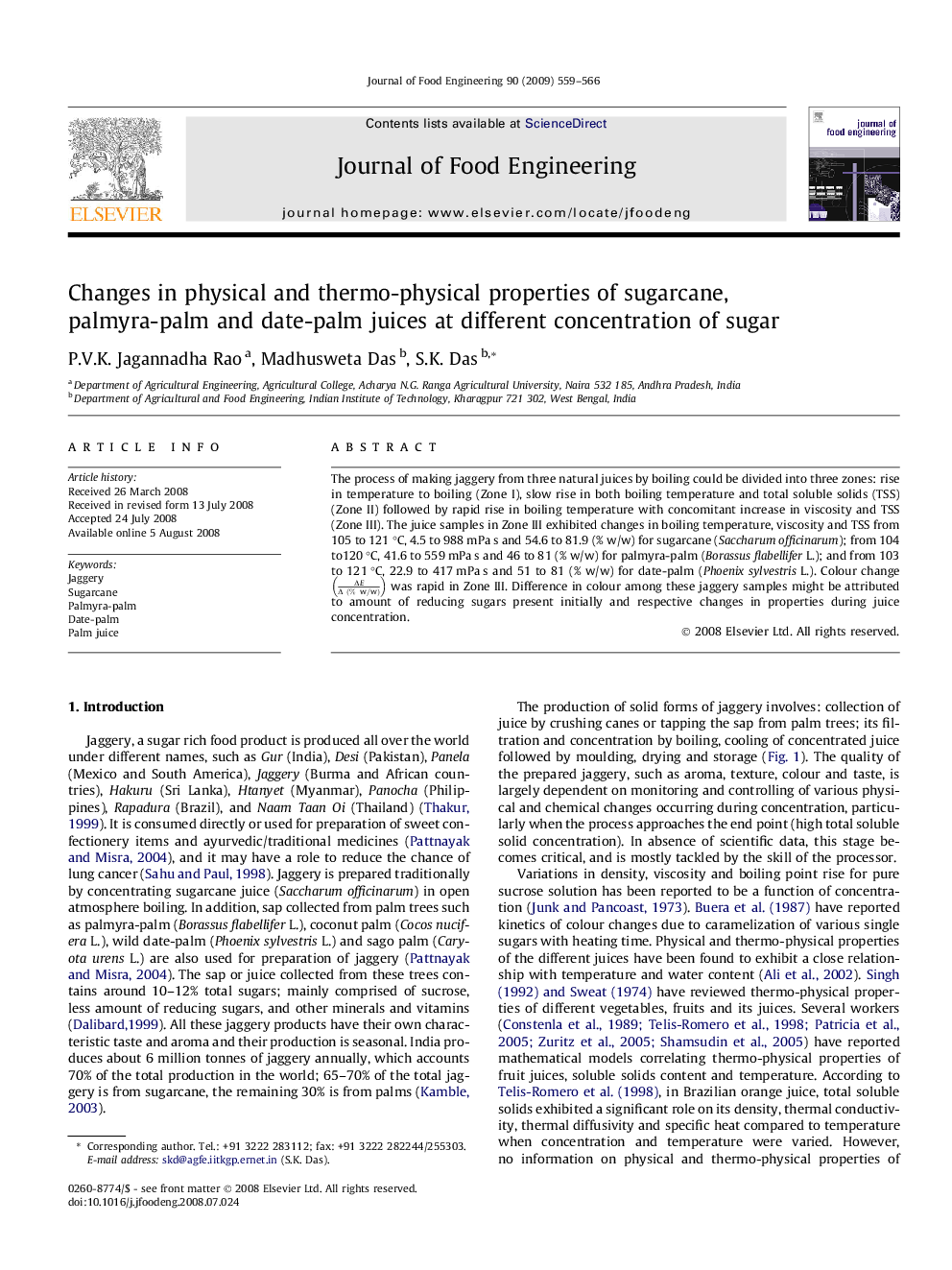| Article ID | Journal | Published Year | Pages | File Type |
|---|---|---|---|---|
| 224856 | Journal of Food Engineering | 2009 | 8 Pages |
The process of making jaggery from three natural juices by boiling could be divided into three zones: rise in temperature to boiling (Zone I), slow rise in both boiling temperature and total soluble solids (TSS) (Zone II) followed by rapid rise in boiling temperature with concomitant increase in viscosity and TSS (Zone III). The juice samples in Zone III exhibited changes in boiling temperature, viscosity and TSS from 105 to 121 °C, 4.5 to 988 mPa s and 54.6 to 81.9 (% w/w) for sugarcane (Saccharum officinarum); from 104 to120 °C, 41.6 to 559 mPa s and 46 to 81 (% w/w) for palmyra-palm (Borassus flabellifer L.); and from 103 to 121 °C, 22.9 to 417 mPa s and 51 to 81 (% w/w) for date-palm (Phoenix sylvestris L.). Colour change ΔEΔ(%w/w) was rapid in Zone III. Difference in colour among these jaggery samples might be attributed to amount of reducing sugars present initially and respective changes in properties during juice concentration.
